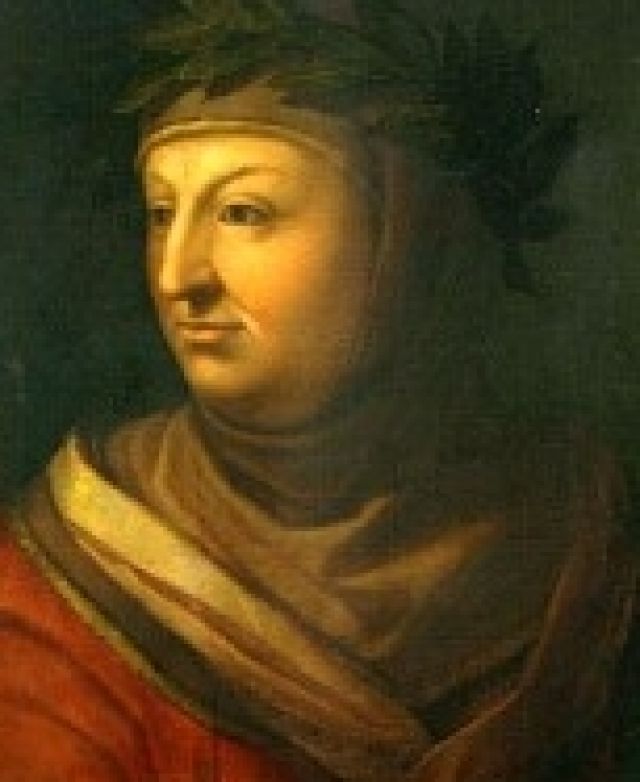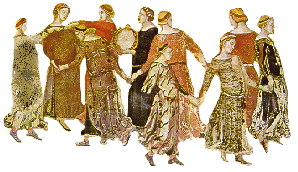



l Read
the Preface
(Proem) and the
frame story (The Introduction in Day 1) of Decameron
卜伽丘《十日談》
十日談(上)
十日談(中)
十日談(下)
Frame
story + 100 stories told by 10 young people within 10 days (10 X 10 = 100) +
Conclusion
The
ten narrators:
Female: Pampinea, Filomena, Neifile, Fiammetta, Emilia, Lauretta, Elissa
Male: Panfilo, Filostrato, Dioneo
Author's Preface and Introduction: The author addresses the implied reader directly, tell them the origins of these 100 novellas, introduces the ten narrators, and describes in realistic details the Black Death of 1348 in Florence. To flee from the threat of the plague, seven girls and three young men went out of the city to a country house with beautiful garden and stayed there for 10 days. They entertained themselves by telling story. Each of the ten storytellers will tell a story on each of the ten days. Each storyteller (except Dioneo) must tell a story which follows a topic determined by the king or queen of the previous day.
Author's Conclusion: The author defends the tone of his work against those critics who regard it as obscene, and against those who accuse him as slandering churchmen.
The use of frame can be found early in the pediment (山牆), metope (排檔間飾), and frieze (中楣) of Greek temple, which is a form to organize decorative sculpture on the architecture. Not until the 14th century did the artist consciously use "frame" as a way to create a sense of reality. Such use of frame is frequent in the 14th century literature, painting, and architecture.
In the painting of the 14th century, such as Duccio's The Annunciation of the Death of the Virgin [fig.11.7, c. 1308-1311], Giotto's Madanna Enthroned [fig. 11.8, c. 1310] and The Meeting of Joachim and Anna [fig.11.9, c. 1305], we can the architecture in the painting corresponds to the picture frame. The two kinds of frame--the external picture frame and the internal architectural frame--help to define the realistic space and time of the figure by creating the illusion of depth and enhancing the shaping of volume and weight of the figures. If you compare Duccio and Giotto with Cimabue [fig. 11.4, 11.5], you can recognize the difference use of frame. The illusionist use of the frame is more artistically mastered in the Renaissance. And it becomes one of the characteristics of the Renaissance style.
In Dante's Divine Comedy, Boccacio's Decameron, and Chaucer's Canterbury Tales, the use of frame story not only creates an illusion of a realistic narration, but unifies the collection of stories under an overarching theme and social-political background. The realistic depiction of the personality, profession, and thought of the narrators and the correspondent or ironic language style of the narrators' stories help the reader to have a picture of the development of the theme.
Examples:
4th Day, 1st
Story: Tragic story----> against feudalism
Tancrecredi
Ghismunda (T's daughter) was marred to Prince of Salveno,
Got together with Guiscardo in the underground, committed suicide
Guiscardo (T's velvet) killed by T ------------------------buried together with Ghismunda.
4th Day, 2nd Story
(about Brother Alberto): Comic story ----> ridicule religious decadence
Pretending to be Archangel Gabriel
Berto della Massa became Brother Alberto ---------> Madonna Lisetta
Was smeared with honey and feather
5th Day, 9th Story
(about Federigo and his falcon): Chivalry romance ----> sustain the feudal
system
G's son
Federigo -------------> Monna Giovanna (a rich widow)
F's falcon
The inter-course between man and woman
in these stories symbolizes the trespass or transgression of social status or religious
codes.
If social class and religious rules are
two representative form of restriction en-coded by
society, then love may function as a chance for de-coding and re-coding the submissive humanity.
Latest update: 2004/04/24